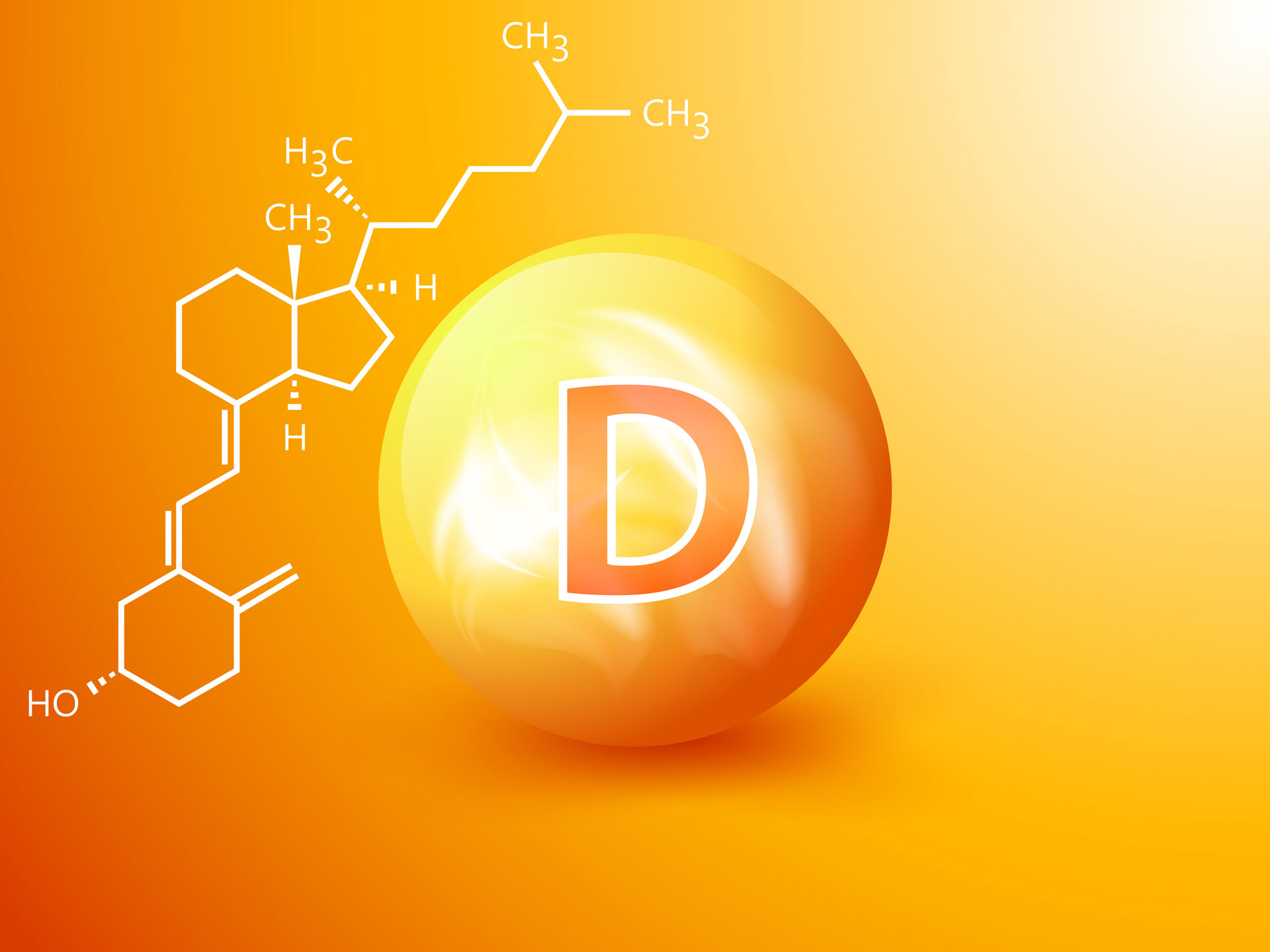Vitamin D – Diagnostic Assessment
Known as the "sunshine vitamin," vitamin D is a fat-soluble steroid molecule. Even brief UV exposure to unprotected skin is sufficient for the body to produce an adequate amount of vitamin D3. This light exposure is estimated to be equivalent to supplementation with 20,000 IU of vitamin D2. In individuals who spend time outdoors regularly, endogenous production in the skin contributes 80-90% to their total vitamin D supply. Alternatively, or as a supplement, vitamin D3 can also be absorbed from food.
Animal-based foods in particular contain relatively high amounts of vitamin D3, including:
- Organ meats
- Meat
- Fish
- Eggs (yolk)
- Dairy products
Vitamin D is also consumed in smaller amounts as vitamin D2 (ergocalciferol), mainly through plant-based foods or edible mushrooms.
Why do we need vitamin D?
Sufficient vitamin D intake is essential for bone formation in children (rickets prevention) and maintaining bone stability in older adults (osteoporosis prevention). A deficiency can aggravate cardiovascular diseases, weaken muscle function, and increase susceptibility to infections and tumor development. Furthermore, inadequate levels may promote the onset of allergies, autoimmune disorders, and diabetes mellitus, and may accelerate the progression of neurological and psychiatric disorders such as depression, schizophrenia, or multiple sclerosis. Risk factors include low dietary intake, calcium deficiency, vegetarian or vegan diets, or limited sun exposure (e.g. due to full-body covering or immobility in elderly individuals).
Musculoskeletal System | Immune System | Nervous System | Cardiovascular System | Endocrine System |
|
|
|
|
|
Figure: Vitamin D deficiency is a key factor in the pathogenesis of lifestyle-related diseases
Vitamin D and Its Metabolic Processes
Vitamin D is converted in the liver into 25(OH)D (also known as calcidiol) via the endocrine pathway. Bound to the transport protein VDBP (vitamin D binding protein), it circulates mainly in this storage form. The physiologically active form 1.25(OH)₂D (also known as calcitriol) is produced in a subsequent step, primarily in the kidneys. This final synthesis step explains the frequent occurrence of 1.25(OH)₂D deficiency in various kidney diseases. Both metabolic steps are hormonally regulated, depending, among other factors, on blood calcium levels. The endocrine pathway is primarily responsible for the "classical" effects of vitamin D on calcium homeostasis and bone health.
In addition, numerous "non-classical" effects have been observed. They can mainly be traced back to non-calcemic signaling pathways such as immunity and the regulation of a wide range of genes.
Free and Protein-bound Vitamin D
For transport through the bloodstream to target organs, around 85% of lipid-soluble vitamin D metabolites are bound to VDBP. Nearly 15% are bound to albumin. According to the “free formone hypothesis”, only about 0.4% of the total 1.25(OH)₂D and 0.03% of the total 25(OH)D is freely available and therefore biologically active. VDBP-bound vitamin D is considered a storage form and cannot cross cell membranes to act directly on cells. The exact proportion of free vitamin D metabolites varies individually and can be influenced by the blood level of VDBP.
Laboratory Diagnostics of Vitamin D
Vitamin D3 status can be accurately measured in serum using HPLC analysis. The 25(OH)D serum level is assessed. A level below 50 nmol/L (20 ng/mL) is considered a treatable deficiency (hypovitaminosis). For preventive purposes, a 25(OH)D level above 100 nmol/L (40 ng/mL) is recommended. To evaluate vitamin D supply more thoroughly, it is advisable to also measure free 25(OH)D3 and VDBP (vitamin D-binding protein).
Measuring VDBP is important because relying solely on total vitamin D levels may falsely suggest the need for supplementation. This explains why some people show no deficiency symptoms despite low total vitamin D levels. Low VDBP concentrations can ensure sufficient free vitamin D availability. Conversely, high VDBP levels can lead to a shortage of free metabolites despite an adequate supply. Therefore, assessing VDBP levels allows for a more accurate determination of the actual status of freely available vitamin D.

